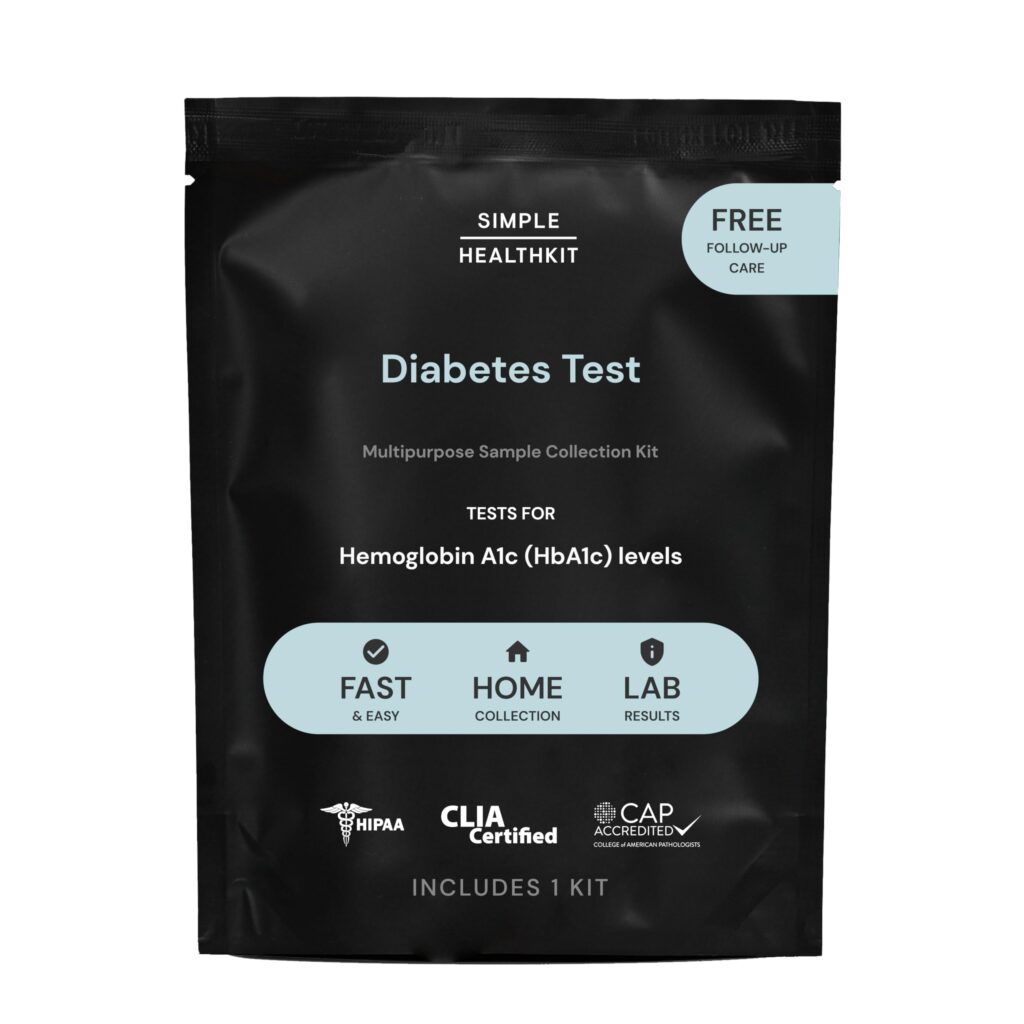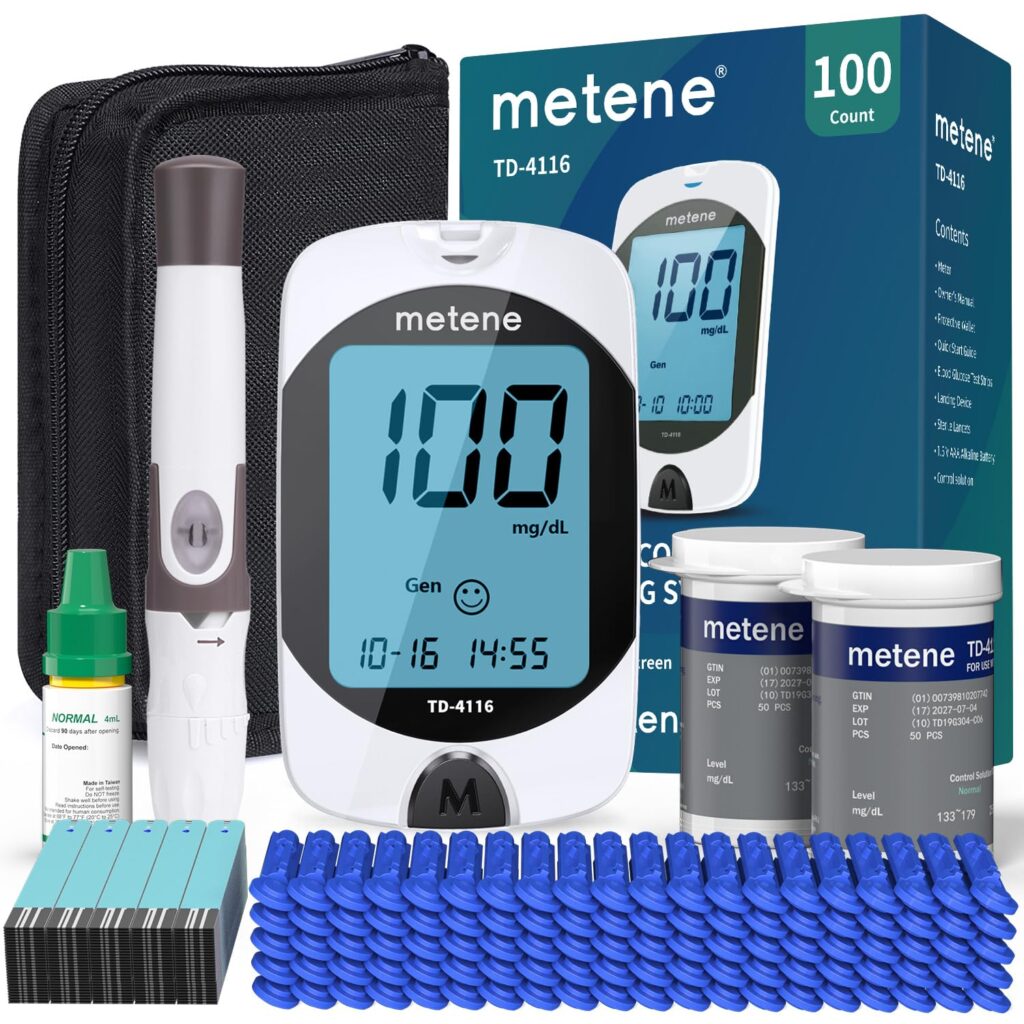Diabetes affects millions of people. Regular blood sugar checks are a key part of managing this condition.
Testing at home gives us more control over our health. No need for extra trips to the doctor’s office.
Home diabetes tests include blood glucose meters, continuous glucose monitors, and kits for A1C or other markers.
We can catch problems early and change our habits faster when we test at home.
Most home tests are simple now, and you can get results in just a few steps. Some connect to smartphones, which makes tracking easier.
When picking a diabetes test for home, accuracy tops the list. We also look for easy use, minimal pain, cost per test, and how simple it is to share results with a doctor.
Features like app connectivity and how often you need new supplies can matter too. We spent hours digging into the best home diabetes tests so you can find reliable options that actually fit your life.
Best At-Home Diabetes Test Kits
We’ve checked out the best at-home diabetes test kits. These help you check your blood sugar levels without hassle.
Our picks cover solid options for different budgets and needs.
Simple HealthKit Diabetes At-Home Test

This is a handy choice if you want to check your HbA1c at home and get quick, private lab results.
Pros
- Clear instructions and an easy process
- Fast results once the lab gets your sample
- Free follow-up care if your results are off
Cons
- Online registration glitches can block you from finishing your test
- Mailing delays or timing issues can slow things down
- The kit expires, so watch out for old stock
We tried the Simple HealthKit Diabetes At-Home Test and found it easy to use. The instructions were straightforward, and collecting the blood sample was quick.
Mailing it took just a minute. Results showed up in the online portal a couple of days after the lab received our kit.
We liked knowing our privacy was protected and that follow-up care was included if anything unusual came up.
On the downside, registration can get frustrating. If the kit doesn’t register, you’re stuck until support helps out.
Mailing delays can mess with timing too, especially if the kit’s close to expiring. Register it right away and check the expiration date—then you’ll be fine.
Glucoracy Home Diabetes Test Kit

If you want a simple, reliable way to check blood sugar at home, this kit has everything in one box.
Pros
- Plenty of test strips and lancets—no need to reorder right away
- Fast, easy-to-read results (even for first-timers)
- Sturdy case keeps everything organized for travel or home
Cons
- Only works with Glucoracy test strips, so you’re stuck with their brand
- Accuracy is good but not perfect—saw tiny differences compared to other testers
- Saving and finding past readings takes a bit of learning
Using this kit was hassle-free from the start. The lancing device offers different depth settings, which makes finger pricks more comfortable.
Setup, testing, and checking results took just minutes. All the parts fit neatly in the travel case, so it’s easy to bring along.
The big screen makes numbers easy to see, even if you have low vision. The memory function helps you track trends, though it could be simpler.
Downsides? You can’t use other brands’ strips, and the memory feature isn’t the most user-friendly.
But for the price and what you get, Glucoracy Home Diabetes Test Kit is a good value and makes testing less stressful.
EldonCard Blood Type Test Kit

This kit is a practical pick for anyone who wants to know their blood type without leaving home.
Pros
- Step-by-step instructions make it simple
- Results in just a few minutes
- Card included for recording and saving your results
Cons
- The finger lancet can be finicky
- You have to work quickly for clear results
- Can get messy if you’re not careful with blood
We tried the EldonCard Blood Type Test Kit and liked how easy it was to follow the instructions. The process went smoothly, and we had results in under ten minutes.
The included card lets you save your results for later. The kit comes with everything you need, so no last-minute shopping trips.
The lancet could be better. Some of us had to press harder than expected to get enough blood.
You really need to move fast, or the results might be unclear. We recommend keeping a tissue and using a table to avoid messes.
All in all, it’s a solid option for checking your blood type at home.
Metene TD-4116 Glucose Monitor Kit

If you want a no-fuss, reliable home diabetes test, this kit is easy and practical for regular checks.
Pros
- Quick results in under 10 seconds with just a small blood drop
- Large, easy-to-read display
- Comes with enough strips and lancets for long-term use
Cons
- No Bluetooth or app for digital tracking
- Sometimes shows confusing error messages
- Strips only work with Metene, so you have to stick with their refills
With the Metene TD-4116, we noticed right away how simple it was to start. No setup codes—just open the box and go.
The instructions are clear, and the big screen makes reading results easy. Testing takes seconds and barely needs any blood.
The lancing device can be adjusted for less pain. There are plenty of lancets and strips, so you’re set for a while.
We liked the reminder alarms—they’re helpful for those of us who forget to test.
The downside is the lack of app connection. Tracking trends means writing things down or scrolling through the device memory.
We also ran into a couple of error codes that needed a retest, so following instructions closely matters. For basic home blood sugar checks, the Metene TD-4116 gets the job done.
Contour Next Test Strips, 70 Count

If you’re after accurate and easy home diabetes checks, this product stands out for reliability and simplicity.
Pros
- Accurate results with a tiny blood sample
- No coding needed—just insert and test
- Second-Chance Sampling helps avoid wasting strips
Cons
- Only fits Contour Next meters
- Container can be tough to open
- Costs add up with frequent testing
We found the Contour Next Test Strips, 70 Count easy to use right away. No coding means less hassle, and the instructions are clear.
The small blood sample needed makes testing less painful. Second-Chance Sampling is a real money-saver—you can add more blood if you didn’t get enough the first try.
Keep in mind these only work with Contour Next meters. The packaging can be annoying if you’re in a rush.
Costs might rise if you test a lot, but the accuracy and ease of use make these strips a top pick for home care.
Buying Guide
When we hunt for an at-home diabetes test, we want something that’s easy to use and gives clear results.
It’s smart to check if the test is approved by health authorities. That’s just one more layer of peace of mind.
Let’s think about the type of test we need.
Some tests are for daily blood sugar monitoring. Others check long-term sugar control, like A1C.
We’ve got to pick the test that fits our situation.
Key Features to Consider:
- Ease of Use: Simple instructions and clear results keep things straightforward.
- Sample Type: Some tests use a drop of blood. Others offer non-blood options, like saliva or urine—handy if you’re squeamish.
- Accuracy: Go for tests with a reputation for reliable results.
- Speed: How long do you want to wait for an answer?
- Cost: Double-check if you’ll need extra test strips or other parts down the road.
Here’s a table to help compare what matters most:
| Feature | What to Look For |
|---|---|
| Approval | Health authority cleared (like FDA or CE mark) |
| Instructions | Clear, simple steps with diagrams or videos |
| Sample Method | Blood, saliva, or urine (pick what you’re most comfortable with) |
| Result Time | Fast results (usually a few seconds to minutes) |
| Extra Supplies | Check for price and need for test strips or lancets |
It’s worth reading customer reviews to see if the kit is actually easy to use.
We might also want to see if the packaging protects everything and if customer support is helpful—or even reachable.
Frequently Asked Questions
We can check for diabetes at home with common tools, test kits, and sometimes natural methods.
These options help us understand our blood sugar, find decent kits nearby, and maybe learn about free resources.
What is a reliable method for home-based diabetes testing without the use of medical equipment?
We can watch for symptoms like frequent urination, feeling extra thirsty, or dropping weight for no reason.
Energy dips, mood swings, and blurry vision might also be clues.
But honestly, these signs aren’t as accurate as a home test kit. Observing symptoms is just a first step, not a solution.
Can you monitor blood sugar levels at home without resorting to finger pricking?
Right now, most accurate home tests still need a finger prick.
Some newer gadgets try to measure glucose without breaking the skin, using sensors or scanners. They’re not super common yet, and accuracy can be hit or miss.
It’s probably best to talk to your doctor before picking a non-invasive device.
How does a diabetes home test kit work?
Most kits come with a small needle (lancet) and test strips.
You prick your finger for a drop of blood, put it on the strip, and slide it into a meter.
The meter spits out your blood sugar number in seconds. That helps you keep tabs on your sugar control at home.
Where can I find a diabetes test kit near me?
You can buy diabetes test kits at local pharmacies, some grocery stores, and big retail chains.
Plenty of online stores and medical supply sites offer free shipping, too.
Some health clinics or diabetes centers might even hand out kits or at least point you in the right direction.
What are natural ways to check my blood sugar levels at home?
Honestly, there’s no natural method as accurate as a test kit.
You can pay attention to warning signs like tiredness, blurry vision, or feeling dizzy, but these aren’t reliable for measuring your real blood sugar.
If you want a real answer, use a proper test kit.
Is it possible to get a diabetes test kit for free, and if so, how?
Some insurance plans, clinics, or government programs actually hand out free diabetes test kits. You might also spot them at local health fairs or community events—they sometimes just give them away.
Honestly, it’s worth calling your doctor, pharmacy, or even the local health department to check if they have any free kit options. And hey, some manufacturers throw in discounts or samples if you ask.



